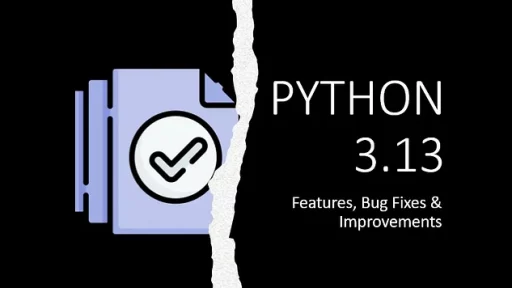As a programming language that excels in readability and simplicity, Python also provides a rich set of tools for manipulating text. Whether you’re reading a file, processing a dataset, or creating a web application, working with strings is essential. In this article, we’ll discuss the basics of string manipulation in Python and cover some real-world examples you can apply today.
STRING BASICS
At its core, a string in Python is a sequence of characters enclosed by either single (') or double (") quotes. Both types of quotation marks are interchangeable, which means 'Hello' and "Hello" are treated the same way.
Let’s start by creating a string:
message = "Welcome to Python string manipulation!"With this basic string, you can perform various manipulations.
CONCATATING STRINGS (Concatenation)
Concatenation refers to combining two or more strings into one. You can do this using the + operator. For example:
greeting = "Hello, "
name = "Alice"
welcome_message = greeting + name
print(welcome_message) # Outputs: Hello, AliceThis simple operation is useful when you want to create dynamic messages, such as greeting users on a website.
STRING METHODS
Python has built-in string methods that make string manipulation easier. These methods can transform strings in several ways:
- Upper and Lower Case: You can easily convert a string to all uppercase or lowercase.
message = "Python is fun!"
print(message.upper()) # Outputs: PYTHON IS FUN!
print(message.lower()) # Outputs: python is fun!2. Strip: This removes unnecessary whitespace from both ends of a string, which can be handy when working with data from users.
user_input = " hello world "
clean_input = user_input.strip()
print(clean_input) # Outputs: hello world3. Replace: You can replace parts of a string with another substring using replace(). Imagine you have an email template stored in a file and need to customize it for each user. Here’s an example:
template = "Dear [name], thank you for using our service."
personalized = template.replace("[name]", "Alice")
print(personalized) # Outputs: Dear Alice, thank you for using our service.SLICING STRINGS
Slicing lets you extract parts of a string based on their index. Each character in a string has an index, starting from zero. Here’s how slicing works:
text = "PythonProgramming"
print(text[0:6]) # Outputs: PythonSlicing is useful for situations like extracting the domain from an email or URL:
email = "contact@website.com"
domain = email[email.index("@") + 1:]
print(domain) # Outputs: website.comSTRING FORMATTING
Another important aspect of working with strings is formatting them dynamically. Python offers several ways to do this, and one of the most modern approaches is using f-strings. Here’s an example:
name = "Alice"
age = 25
info = f"My name is {name}, and I am {age} years old."
print(info) # Outputs: My name is Alice, and I am 25 years old.You can use f-strings to insert variables directly into strings without needing to concatenate them. This keeps your code clean and readable. It’s particularly helpful when building things like file paths.
REGULAR EXPRESSIONS (Regex)
Regular expressions, often abbreviated as regex, allow you to search, match, and manipulate strings based on patterns, making them perfect for tasks like validating user input, finding specific text, or cleaning data.
To start using regex in Python, you’ll need to import the re module. Let’s look at a few common use cases and break down how regex can simplify string handling.
Matching Patterns
Suppose you need to check if a string contains a valid email address. You can create a pattern that defines the structure of an email. Here’s an example:
import re
email = "test.email@example.com"
pattern = r"[^@]+@[^@]+\.[^@]+"
if re.match(pattern, email):
print("Valid email!")
else:
print("Invalid email!")In this pattern:
[^@]+matches one or more characters that aren’t@@is a literal character\.matches a literal period (since.by itself matches any character)
This is a simple email validator. Although real-world validation might need more complex rules, regex gives you a quick way to check basic patterns.
Finding Patterns
You can also find specific patterns inside a string. For instance, let’s say you want to extract all the phone numbers from a block of text. Assuming the numbers are in the format (123) 456-7890, you can use the re.findall() function:
text = "Call me at (123) 456-7890 or (123) 654-3210."
phone_pattern = r"\(\d{3}\) \d{3}-\d{4}"
phones = re.findall(phone_pattern, text)
print(phones) # Outputs: ['(123) 456-7890', '(987) 654-3210']Here:
\(\d{3}\)matches an opening parenthesis, followed by exactly three digits, and then a closing parenthesis.\d{3}matches exactly three digits.-is a literal dash.
The result is a list of all phone numbers matching that pattern in the text.
Replacing Text
Regex is great for text substitution as well. If you need to mask sensitive information like phone numbers or email addresses in a document, re.sub() can help:
text = "Contact me at (123) 456-7890 or email me at test@example.com."
masked_text = re.sub(r"\(\d{3}\) \d{3}-\d{4}", "[REDACTED]", text)
masked_text = re.sub(r"[^@]+@[^@]+\.[^@]+", "[EMAIL REDACTED]", masked_text)
print(masked_text)This will replace phone numbers with [REDACTED] and email addresses with [EMAIL REDACTED]. It’s especially useful when you need to sanitize data before sharing or storing it.
Splitting Strings
Regex can also be used to split strings in more advanced ways than Python’s default split() method. For example, you may want to split a string by multiple delimiters like commas, semicolons, and spaces:
text = "apple, orange;banana grape"
items = re.split(r"[,; ]+", text)
print(items) # Outputs: ['apple', 'orange', 'banana', 'grape']The pattern [ ,;]+ matches one or more commas, semicolons, or spaces, splitting the string wherever any of these delimiters appear.
WORKING WITH FILES
Let’s move beyond basic string manipulation and look at a real-world application: reading and writing text files.
Suppose you’re working on a web application where you need to log user activity. You might want to save that data to a text file. Here’s how you can read and write files using Python:
# Writing to a file
with open("logs.txt", "a") as file:
file.write("User Alice logged in\n")
# Reading from a file
with open("logs.txt", "r") as file:
content = file.read()
print(content)In this example, the logs.txt file will store user activity, and every time someone logs in, their activity will be appended to the file. Reading the file allows you to process or display this data when needed.
REAL-WORLD EXAMPLE (URL Handling)
Let’s say you’re building a URL shortener. You need to take long URLs, process them, and generate shorter versions. Python’s string manipulation tools make this easy.
Here’s how you could extract the base domain from a URL and store it for shortening:
long_url = "https://www.example.com/some/long/path/to/a/resource"
base_url = long_url.split("/")[2]
print(base_url) # Outputs: www.example.comThis split technique is particularly useful when dealing with long URLs. By breaking the string at each /, you can easily extract different parts of the URL.
HANDLING SPECIAL CHARACTERS
HANDLING SPECIAL CHARACTERS
When working with strings, you may encounter special characters, such as newlines (\n) or tabs (\t). Python allows you to include these in strings by using escape sequences. For instance:
text = "Hello\nWorld!"
print(text)
# Outputs:
# Hello
# World!You can also handle Unicode characters and other text encodings with ease. This is essential for building applications that support internationalization or need to process non-English text.
DEDENT()
Python’s dedent() function from the textwrap module is useful when you need to clean up indented multi-line strings. Often, developers write strings in code with indentations that match the flow of the program. This can make the string harder to read when displayed or used, as the extra spaces remain in the string itself. dedent() helps by removing common leading whitespace from every line, making the string cleaner without changing its appearance in the source code.
Here’s an example:
from textwrap import dedent
text = """
This is a block of text.
It is indented but doesn't need to be.
The dedent function will fix that.
"""
cleaned_text = dedent(text)
print(cleaned_text)In this code, the block of text is indented by four spaces in each line. When dedent() is applied, it removes the common leading spaces and returns the text without unnecessary indentation. This is particularly helpful when generating output that needs to be formatted or printed cleanly. It doesn’t modify the internal structure of the text, but rather ensures that it looks neat when used elsewhere.
Thank you for following along with this tutorial. We hope you found it helpful and informative. If you have any questions, or if you would like to suggest new Python code examples or topics for future tutorials/articles, please feel free to join and comment. Your feedback and suggestions are always welcome!
You can find the same tutorial on Medium.com.


